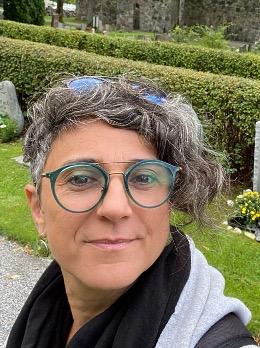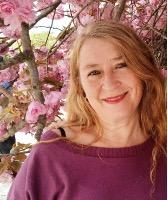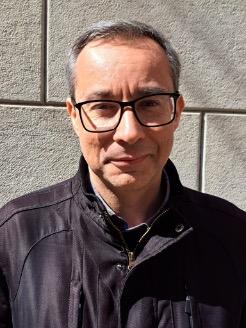Deconstructing Ignorance: From Knowledge to Thought "Personal stories bring us closer to History"
Close to commemorating the 80th anniversary of the liberation of the Nazi death camps and the end of the Second World War (1939 - 1945), the challenges of working with this episode of contemporary history are significant. Until now, the narration and study of the Shoah had the invaluable support of its survivors. Now, with the progressive disappearance we only have primary and secondary sources left, most of them linked to the genocide. But Jewish culture, of which generally not much is known in the wider public , goes beyond the Shoah, which was one episode within the stigmatization and persecution of the Jewish people that has been ongoing since antiquity. Often, social prejudices, transmitted insistently and with a clear ideological will, prevail over respect for otherness. They insist on the differences between cultures, instead of promoting what equals us as human beings and dignifies us: the right to live.
Consequently, teachers and educators committed to the transmission of historical memory and the defense of human rights, find it difficult to bring Jewish culture apart from the Shoah closer to their students. This historical episode is also widely known amongst teenagers due to its prolific dissemination through cinematography and literature. For this reason, we value the material offered by the HerStories project, which allows students to get closer to the lives of seven European women of different nationalities, who both experienced and represent the experience of Jewish culture and history from various positions and in diverse ways. The project shows their lives in their entirety - including hobbies, occupations and relationships- before, during and after the Shoah. Working from a biography allows us to see how a person at a given moment can be considered a fully-fledged citizen and, from one day to the next, can lose all their rights due to a legal change; not having left of being the same, although it has ceased to be so in the eyes of others. Depending on arbitrary criteria, based on traditionally transmitted prejudices that respond to specific interests of authorities, these women were mistreated to the point of barely surviving. It didn't matter what the women were actually like, but how the fascist authorities wanted to see them so they could mistreat them accordingly, dehumanize them, and erase their culture at the same time.
Jewish culture, a fundamental part of Europe as a whole, is one of the foundational pillars of our present world. In our geographical framework, Catalonia,
Reading HerStories biographies puts students in contact with new words that are discovered from specific lives. Many of these words may be totally unknown or others misunderstood, and therefore, it will be necessary to learn to define them in order to approach the knowledge of diverse European Jewish life, thus creating a broad glossary of general terms based on personal experiences. This lexical work seems essential for students to be able to analyze and understand historical sources, including the biographies included in the HerStories project, to approach this culture in this way. The construction of this glossary will allow them to be able to reason and explain using fair and appropriate words, and in order to argue without intentional interference. This lexicon can include religious terms, such as 'synagogue', 'mezuzah', 'assimilated', 'converted'; cultural, such as "Ashkenazi", "Sephardic"; political, such as "Zionism", "depuration"; linguistic, such as "Yiddish", "Ladino"; or others with their specific connotation of violence directed against Jews such as "pogrom", "ghetto", "selection", "concentration or extermination camps", "anti-Judaism", and "antisemitism." This glossary will not only allow us to relate and understand the past, but also current events related and relevant to Jewish people and culture.
Based on a general historical chronological axis (macrohistory) students will place in time the biographical facts described in the historical sources offered by HerStories (microhistory), highlighting the vital aspects linked to the reality of women (gender perspective). Women are a collective too often forgotten and silenced in history in general and also in the particular case of Shoah.
At the same time, the students will place in space, on a map, the multiple geographical displacements, often forced, of each of the women, thus relating their individual migrations to the larger political-geographic framework of the period. The aim of this analysis of the seven biographies, in time and space, will allow students to understand the consequences of the rising prevalence of prejudices against the Jewish community, which finally led to the Shoah.
Looking deeper into the biographies of these women, we can see their need to leave a legacy. For example: Lisa Pinhas (Fig. 1) published her written testimony, which she wrote herself (Fig. 2); Irena Wygodzka (Fig. 3) agreed to be interviewed, so that through her story her experience would be remembered; and Rosl Heilbrunner (Fig. 4) and her husband collected evidence of the events they experienced, keeping all kinds of family documents in seven hidden boxes in their Barcelona residence to leave a record for their descendants. As a result of the find, Rosl's daughter, Dory Sontheimer, has been responsible for disseminating the contents of the boxes through several books (Fig. 5) and documentaries,
The Shoah, students should realize, did not come out of nowhere, but was the final consequence of different deliberately premeditated actions that, apart from the immense human suffering it caused, led to the development of a new legal framework d. The later desire to judge the crimes of Shoah led to the creation of the legal concept of "genocide"
The students must become aware of the importance of all the learning and values obtained from the study of the lives of these seven women presented in HerStories. From now on, they will become the bearer of this message in the educational and local environment and beyond, using the networks
Through the story of a specific person, a Jewish woman, you can empathize and restore an entire community. According to the precept, taken from the Talmud, that appears on Yad Vashem's Medal of the Righteous Among the Nations: "Whoever saves a Life, saves the World".


